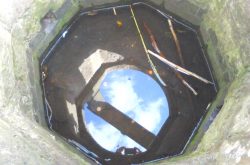Invisible… is a doorway to another place and time – like a fairy tale mirror, or the doorway to Narnia.
Through a series of experiments and performative workshops the artist/researcher Rachel Jacobs in collaboration with artist Silvia Leal, will embed a reflective interactive surface into a larger fold out adaptive  structure. Creating an experience that allows us to see into the future, enter another space on the other side of the world and reveal things that we can’t see in the environment where we are.
structure. Creating an experience that allows us to see into the future, enter another space on the other side of the world and reveal things that we can’t see in the environment where we are.
Invisible is an outdoor site-specific mobile ‘performance laboratory’ that will reflect the people and environment around it, where people can interact with the reflective surface within the space. The team will experiment with a variety of interactions using Horizon’s existing mirror technology including: superimposing camera images from a different location into the mirrored reflections; solo and multiple interactions with the mirrored surface; playing with bouncing reflections from different surfaces, and viewing the surface from different angles. We will also be developing our own parallel interactions, including: building a bespoke reflective surface as part of a larger adaptive structure, building a second structure that will allow interactions between people in different locations, and link up the technology to the performing data toolkit to use environmental, aggregated and/or physiological sensor data as another way to control interaction.
Rachel will be working with Silvia Leal to develop the performance laboratory, experiment with the technology and make links between spaces across the Atlantic (UK and Brazil), using a combination of physical interactions, sensor data and video streaming, with workshops taking place in Primary Studios in Nottingham, as part of an artist residency due to take place between July – November 2016.
The performance experience pieces together a narrative that reveals myths, stories and fairy tales of where it is situated, interweaved with stories from the other space – across the Atlantic. These narratives aim to encourage visitors to playfully ask questions about the future of the environments that the artwork reflects and reveals.














